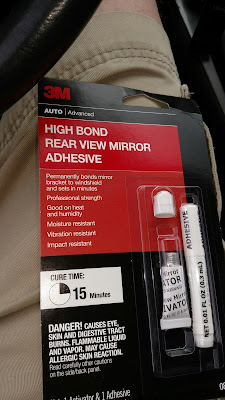 |
| Looking For Bargains At The Pawn Shop |
The other day, my son and I took my wife to the fabric store. After a few minutes, my son and I decided to leave my wife to shop in the fabric store (risky, I know...) while we went next door to check out the pawn shop.
High on my list of things to look at in the pawn shop was binocculars. I have been looking for a good pair of binocculars for a few years, checking out every pair I could find at consignment shops and garage sales.
I was excited to see that the pawn shop had five pairs in a glass display case for sale ranging from $15 to $70. I had the lady working in the shop come over and open the display case. Unfortunately for her, she had to stay right there the whole time the case was unlocked.
I tried out the binocculars by looking out the window at nearby buildings and also by trying to read price signs across the store. The binocculars I tried looked cool, but the optics were terrible- even the $70 pair produced blurry results.
The last pair in the case looked older than the rest and was a little beat up. I figured I might as well try it since it was priced at $15 and it was the last one.
Much to my surprise, this pair of binocculars worked great! It has an easy-to-use lever mechanism to adjust the focus. I could read the price signs clearly from all the way across the store. I could see bricks and small details in the building through the window.
My quest for a good pair of binocculars is over!
With spring fast approaching, there was a clearance rack of leather jackets displayed. Some of the jackets looked really expensive, but were priced at $15. My son tried one on and liked it, except it was a size too big. He thought about getting it anyway, but I convinced him that it was just too big.
When we later met up with my other son and told him about the leather jacket deal, he said it is a bad idea to get the wrong size of something, "it's just not worth it."
They had lots of bikes for sale, but I thought the prices were too high. This may be due to the spring season- I may check back around October 15 to see if they have any bargains.
They had a lot of power tools for sale, but these looked heavily used and well worn. I would definitely want to try out the tools from the pawn shop to make sure they are in good working order before buying. Some of the tools were battery powered, and I would worry about the battery being near the end of life and not being able to hold much charge.
The video game selection seemed to be for very old systems and seemed to be pretty well picked over. They had a few old laptops, but they didn't look much better than the old laptop I already have, and these were priced at a couple hundred dollars. I woud rather find a bargain laptop in the open box bargain area at Best Buy than take a chance on one from the pawn shop. At least there would be some opportunity to return a laptop from Best Buy if there is a problem with it.
Here are some things I learned from my trip looking for bargains at the pawn shop:
1) You can't judge a book by its cover. The oldest, most beat up binocculars were by far the best and quite a bargain at only $15. I bet most people wouldn't have even tried them due to their rough appearance.
2) If you want cheap leather jackets, go to the pawn shop in mid-March.
3) If you want to buy a cheap bike at a pawn shop, don't go in the spring
4) I found power tools at the pawn shop, but they looked pretty well worn. Maybe you could buy a cheap power tool at the pawn shop as an alternative to renting one for about the same money.
5) The good electronics and games get snapped up quickly, you would need to check frequently to find something decent.
6) If it doesn't fit, you must acquit... This is a lesson I wish I had mastered long ago. Many times, I have found a bargain coat or even shoes that didn't quite fit- but I bought them anyway because they were priced way down on clearance. As son #2 said, "it's just not worth it."
Copyright © 2017 by Dr. Penny Pincher. All Rights Reserved. Privacy Policy






























